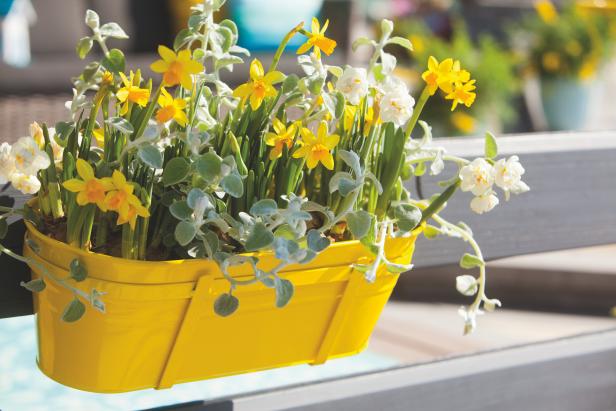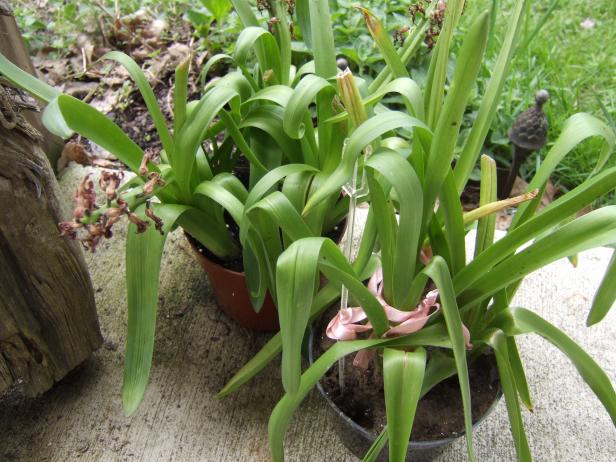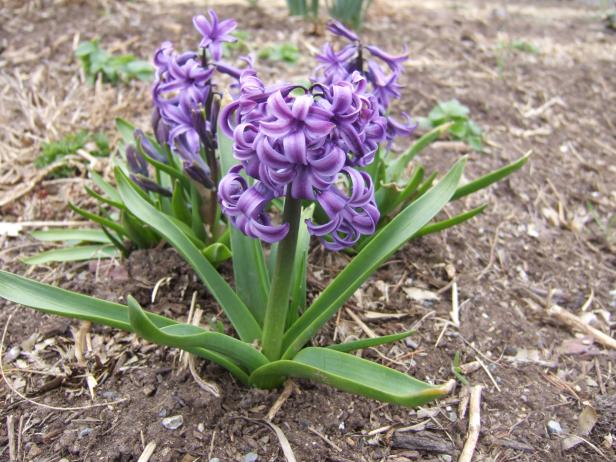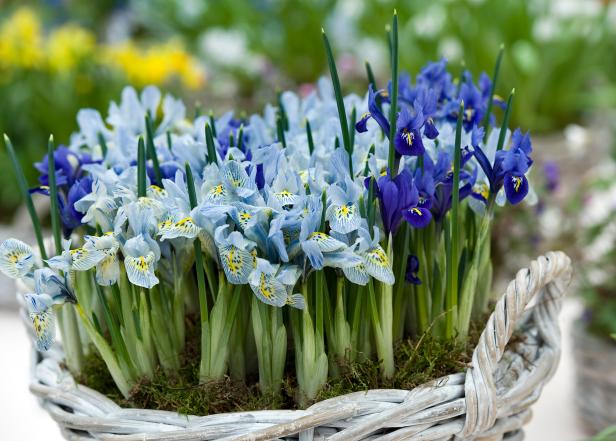What to Do With Easter Bulbs
Learn how to keep Easter bulbs blooming for years to come.
Next to chocolate, the best part about Easter is the drifts of spring bulbs that fill stores everywhere. Even our local corner gas station is in on the flower action, sporting a bank of potted hyacinth, daffodils and tulips.
Pots of bulbs stoke spring fever with their bright colors and fragrances. They also make for easy Easter décor. Simply slip a pot into a pretty bowl, fill another bowl with eggs, and your holiday finery is ready to go. After Easter is over, what’s the best option for pots of forced bulbs? Learn what you can do to keep your flowers growing and giving for years to come.

Move ‘Em Out
Shift the show outside as soon as possible to keep your plants looking their best longer. Pots of spring bulbs thrive in high light, and ambient light outside is brighter than your sunniest window inside. You can arrange pots of bulbs in a container garden with whatever annuals you can find this early in the season. Pansies are a safe bet, along with sweet alyssum or even colorful leaf lettuces.
Don’t forget to water your pots of bulbs, and definitely cover plants if a late freeze is forecast. When you first put bulbs outside, give them a spot with light shade until leaves are acclimated to full sun. If you’re keeping your bulbs indoors to enjoy flowers to the finish, place them near a bright window. Cool temps (mid- to upper 60s) help flowers linger longest.

Remove Spent Blooms
Clip spent flower stalks on potted spring bulbs. Cut them as close as possible to the base, taking care not to damage leaves as you do so. The remaining stem stub will die back. Continue to care for the plant, providing water and bright light. The leaves nourish the bulbs, which may flower in future years if they’re placed in the garden. You want to keep the leaves alive until they naturally die back, just like they do in the landscape.

Move pots of finished bulbs outside as soon as temperatures are warm enough. Cluster them together to make caring for them easier. Place pots on a porch or under a deck where they receive direct sunlight for a little bit each day. If flowers haven’t finished before you set pots outside, clip them once they do.
On a pretty spring day, plant the potted bulb in the garden. Water after planting, and let nature take its course. With spring planting, it’s easy to work the bulbs into your garden’s existing bulb plantings. The only downside is that the leaves aren’t that attractive.
Another option is to care for the bulbs until leaves yellow and die back, then stash bulbs (in or out of the pots) in a shed or garage until fall planting. Remember to label bulbs and mark planting spots in spring so you don’t have to guess where your other bulbs are.

Savor the Show
In future years, your bulbs will reward you with more flowers. In my gardens, forced hyacinths flower the year after planting. It’s not a big show—the flowers tend to be shorter than they were that first year in the pot (see above). In subsequent years, full flower size returns, and bulb clumps multiply.

Which Bulbs Work
Not all Easter bulbs sail through this process successfully and deliver future years of flowers. The ones that work best are:
Hyacinth
Daffodil (Narcissus)
Dwarf iris
Grape hyacinth
Siberian squill
Crocus
Snowdrops
Glory-of-the-snow (Chionodoxa)
source: http://www.diynetwork.com
